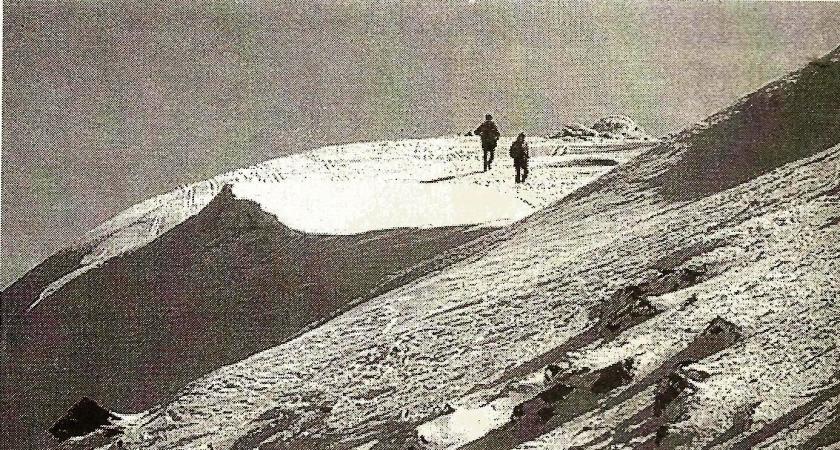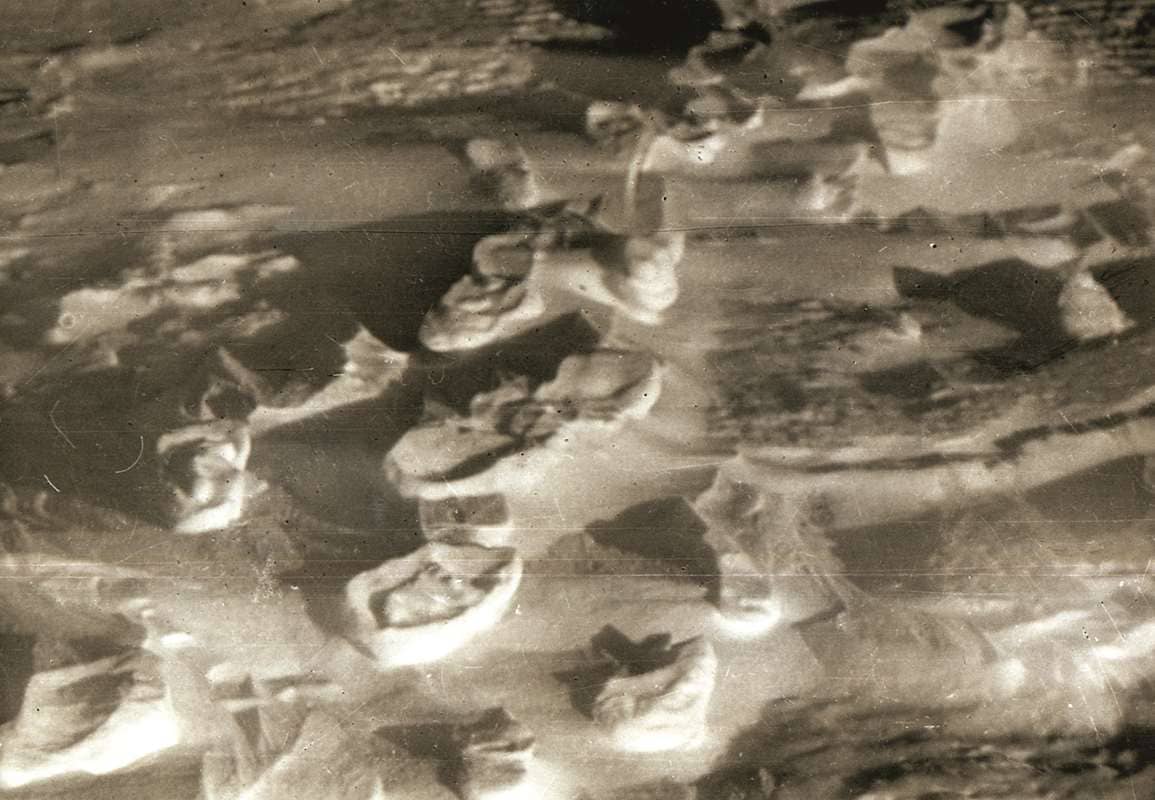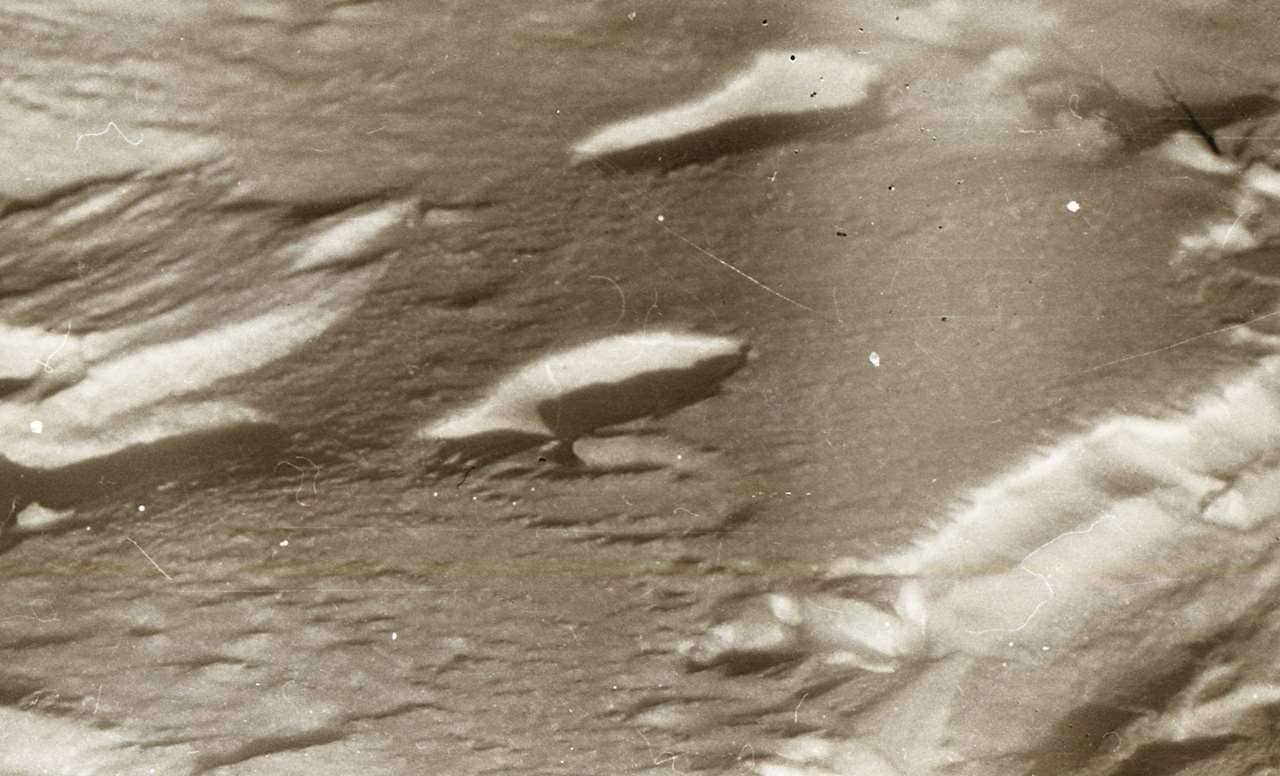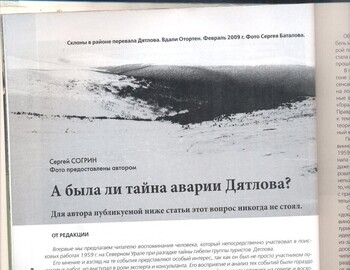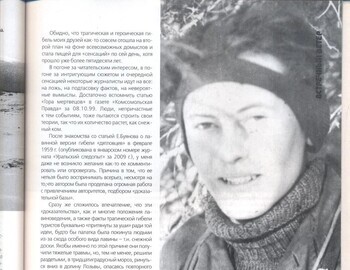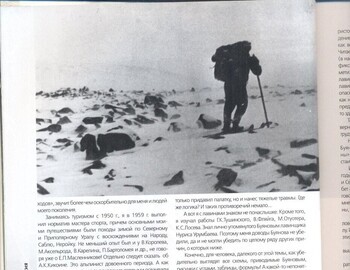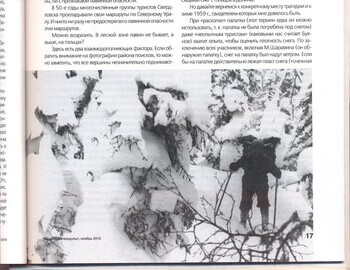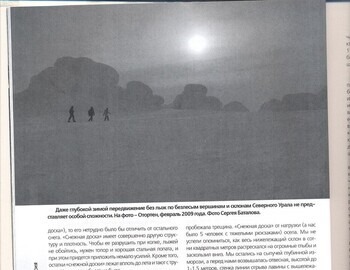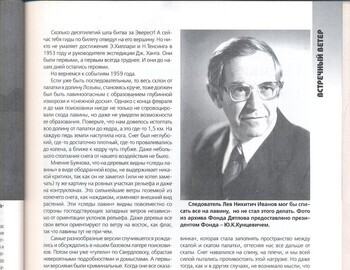
Is the Dyatlov's accident a mystery after all?
Ural Stalker 11.2010. Author Sergey Sogrin
For the author of this article published below, there was never a question in his mind.
The Birth of a Mystery
As a direct participant in those events, I would like to immediately make it clear that there are no mysteries about the death of the group now, just as there were none in 1959.
It is simply difficult for the current generation to understand the situation of those years, the system of prohibitions, secrecy, silence, lies and fear for one's life.
Our family experienced this to the fullest extent when in 1947 we returned from China to our homeland, the USSR, and accepted Soviet citizenship. We were promised shelter and attention, but soon after our return we were met with hostility and suspicion.
The order "from above" - not to disclose anything, to close the investigation into the Dyatlov group case as soon as possible - led to what we have now.
And there was a reason. The investigation ran into secret state interests.
The case had to be closed urgently. And so it has dragged on too long and is disturbing the population. The opinion of those who, having analyzed all the events on the spot, could explain what and how happened, no one was interested in anymore. It was the unwillingness or prohibition to explain:
– what made the group leave the tent?
– how and why did they receive such injuries?
and gave rise to numerous versions. It was impossible to publish and express one's opinion in the newspaper at that time.
This is how the mystery of the death of Igor Dyatlov's group of hikers in the Northern Urals was born.
At the end of the 80s, during the period of glasnost, the first publications about the tragedy in the Northern Urals appeared. The flow of versions grew, but every time I came across another publication about the events of 1959, I was depressed every time by such an increased and unhealthy interest in what happened there.
It's a shame that the tragic and heroic death of my friends somehow completely faded into the background against the background of all sorts of speculation and became food for "sensations" to this day, although more than fifty years have passed.
In pursuit of reader interest, in pursuit of an intriguing story and another sensation, some journalists go to any lengths: to lie, to distort facts, to make incredible fabrications. It is enough to recall the article "Mountain of the Dead" in the newspaper "Komsomolskaya Pravda" for 10/08/1999. People who were not involved in those events also try to build their theories, so their number grows like a snowball.
After reading the article by Evgeniy Buyanov about the avalanche version of the death of the "Dyatlov group" in February 1959 (published in the January 2009 issue of the magazine "Ural Stalker"), I did not even have the desire to comment on it or refute it. The reason is that it could not be taken seriously, despite the fact that the author had done a huge job involving authorities, selecting the "evidence base".
I immediately got the impression that this "evidence", like many provisions of avalanche science, as well as the facts of the tragic death of hikers, were literally "far-fetched" for the sake of the idea that the tent was abandoned by people due to a special type of avalanche - the so-called snow slab. Allegedly, it was for this reason that they received serious injuries, but nevertheless, they decided to rush down into the Lozva valley naked, in thirty-degree frost, fearing a repeat avalanche.
But to run for this reason 1.5 km in such a state, in the snow, without shoes, and not come to their senses, and not understand that this is an escape to certain death, not to return in time!
To claim this is absurd.
I will note that the "snow slab" does not descend again, it simply has nowhere else to come from. Dyatlov, with his experience, knew this.
Despite all the criticism addressed to him about the inconsistency of the avalanche version, Buyanov stubbornly continues to defend it.
- 2 -
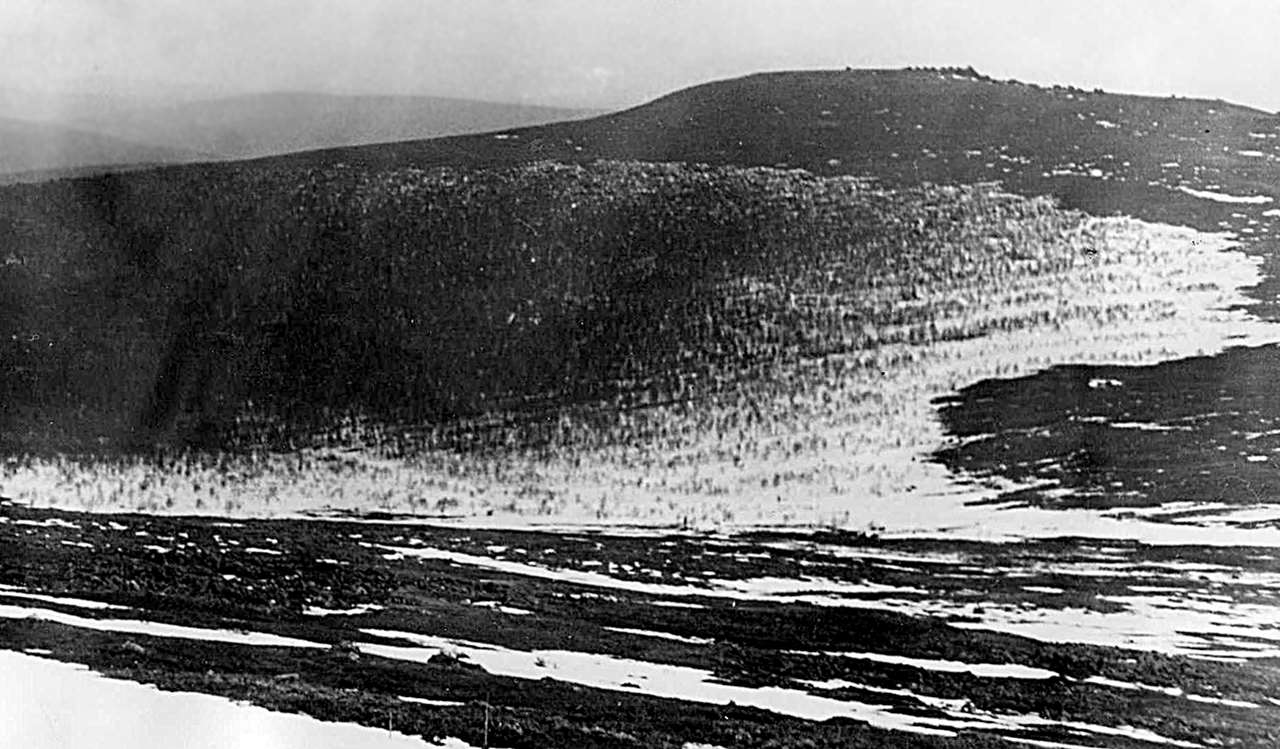
View from the pass to the Lozva River valley. May 1959.
After reading his latest article, "Traces of an Avalanche on Mount Kholat Syakhl and Why They Were Not Seen Earlier" (by the way, even more daring and aggressive in form), I could no longer remain silent, being a witness and participant in those events. Rereading the article, I realized what motivated its author: the awareness of his superiority over everyone. Hence the rejection of the evidence and facts that took place in 1959. His assertion that there were no "experienced hikers" among the searchers, but only those "who have not yet gained experience in hiking" sounds more than offensive to me and people of my generation.
Having been involved in tourism since 1950, in 1959 I fulfilled the standard of a master of sports, and my main trips were winter hikes in the Northern and Subpolar Urals with ascents to Naroda, Sable, Neroika. V. Korolev, M. Akselrod, V. Karelin, P. Bartolomei and others had no less experience, not to mention E. P. Maslennikov! A. K. Kikoin deserves special mention. He was a pre-war mountaineer. And as is well known, mountaineers of that generation were the first to master winter hiking in the mountains. In addition, during the Patriotic War, Kikoin was an instructor of mountain training for troops at the Gorelnik alpine camp near Alma-Ata, where special attention was paid not only to the technical training of cadets, but also to the avalanche danger in the mountains.
"Avalanche traces" on a tent
According to Buyanov, "Maslennikov did not look too deeply into the tent and the traces around it." Then the question arises – how did it happen that all these people who saw and analyzed the real situation and snow conditions in 1959, "did not notice or see anything when analyzing the situation", and Buyanov suddenly, decades later, saw "traces of an avalanche" on the tent, although he himself claims that the avalanche "disappeared due to wind erosion"? A very good explanation, isn’t it? It was and it wasn't!
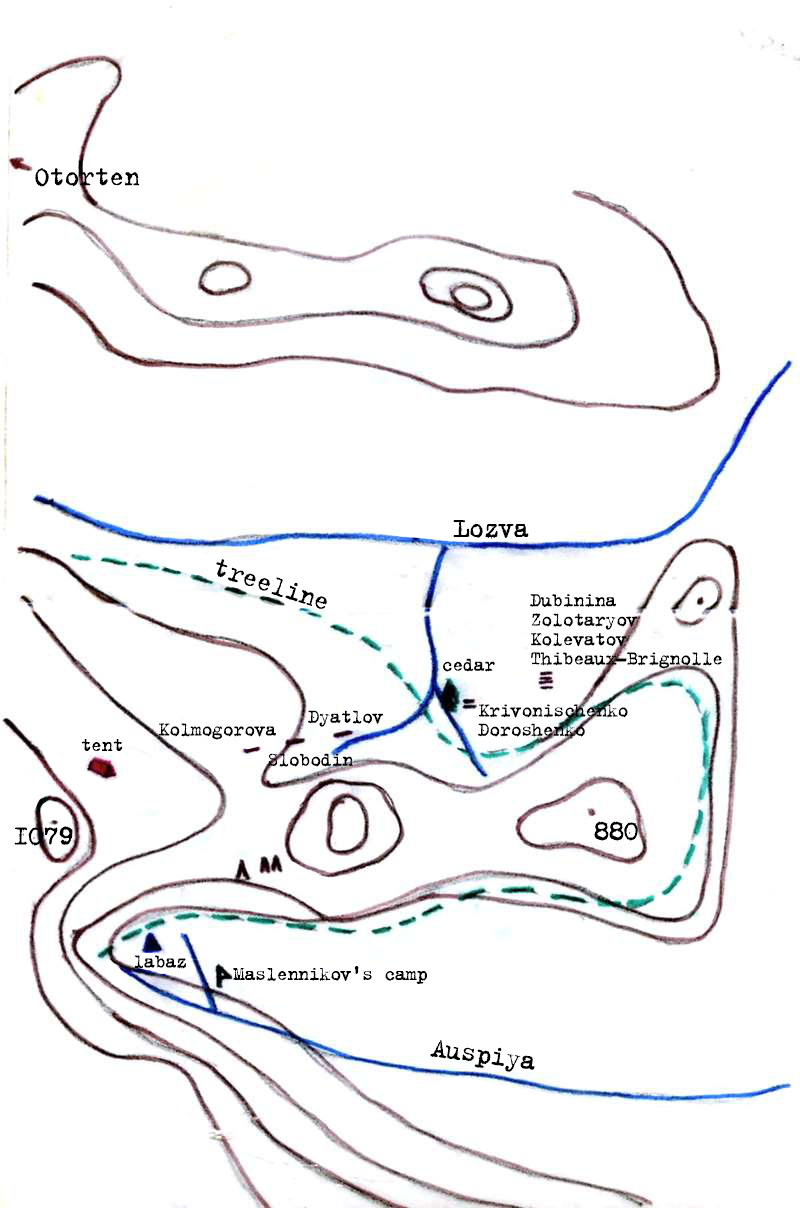
Scheme of the area of the tragedy
I don't want to analyze all the details of Buyanov's arguments in detail - there are plenty of contradictions. But I'll give at least one example.
On the one hand, he claims that "when a small avalanche falls at a low speed, there is no significant compaction of the snow, so wind erosion destroys such a carryover" (for this reason, according to Buyanov, the searchers did not see anything). But on the other hand, this snow was so dense ("snow slab") that it not only crushed the tent, but also caused serious injuries. Where is the logic? And there are many such contradictions...
- 3 -
But I know avalanches firsthand. In addition, I studied the works of Georgy Kazimirovich Tushinsky, Valter Flyaig, Montgomery M. Atwater, Kim Semyonovich Losev. I personally knew the avalanche expert Nuris Urumbaev mentioned by Buyanov. Therefore, Buyanov's arguments did not convince me, and could not convince me for a number of other reasons, which are below.
Of course, for a person far from this topic, how convincing all the diagrams provided by Buyanov, drawings with angles, tables, formulas look! And some incomprehensible "cold shock"!? So solid, scientifically, that you can really believe it ... I agree that all these concepts are used in avalanche science, but they have nothing to do with our case. And here's why.
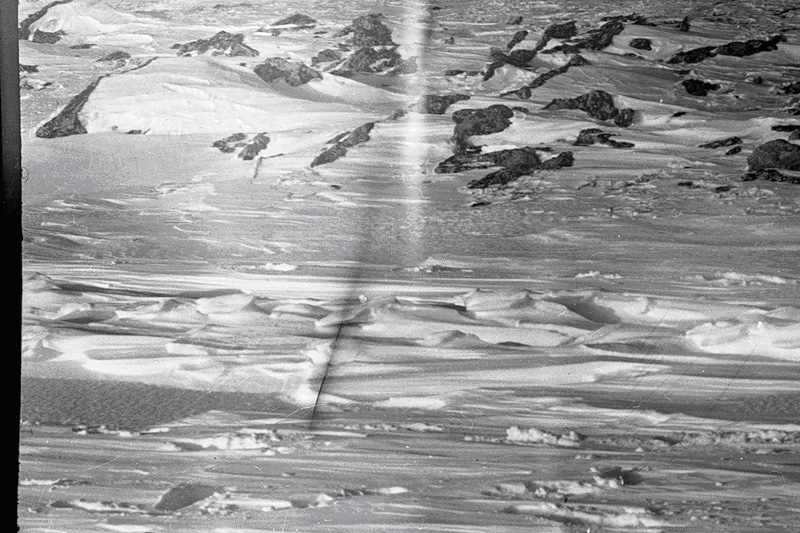
Photo of the third stone ridge. Stones protruding from the snow and traces of the Dyatlov group. The photo was taken on February 27, 1959.
First of all, let us turn to the sources that Buyanov relies on. To the authority and founder of the Soviet science of avalanches, G.K. Tushinsky. Even an uninitiated person understands that in high mountains, such as the Tien Shan or the Caucasus, in a specific region, in a specific valley, there are places and slopes where avalanches occur annually and even more than once. Such avalanches sometimes have their own name. For example, the Persian avalanche on the Georgian Military Road, named in memory of the delegation that died there, which went to St. Petersburg to apologize for the murder of A.S. Griboyedov. There are avalanches that can occur once every decades. And there may be places there where avalanches never happen at all, although according to the “Map of Avalanche-Prone Regions of the USSR”, compiled under the supervision of G.K. Tushinsky (see Fig. 1), the entire region is considered avalanche-prone and is classified as belonging to the first group: "Area with significant avalanche danger: avalanches are frequent, occur annually". The Subpolar Urals are also classified as belonging to the first group on this map. There have been avalanche accidents involving groups of hikers, which Buyanov cites in support of his version. But analogies cannot be drawn, since the entire Northern Urals region is classified as belonging to the 4th group. We read: “Regions with potential avalanche danger (currently safe), i.e. "avalanches have not been recorded" (see "In the Footsteps of Avalanches", K.S. Losev, Gidrometizdat, 1983). There we also read (p. 115): "The avalanche hazard map of the Soviet Union, compiled by avalanche experts, indicates areas of potential avalanche hazard. These areas are now quite safe, as dense forests grow on the mountain slopes, but researchers warn - take care of the forest: if it is destroyed, white death will appear here."
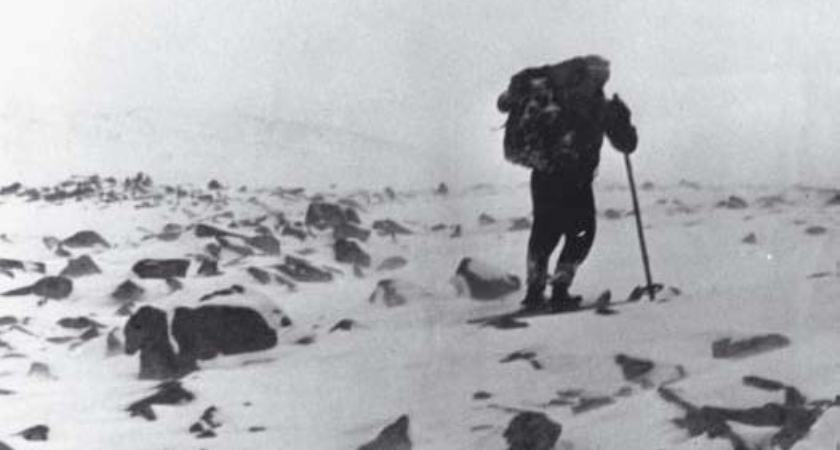
Is the Dyatlov's accident a mystery after all?
That's it! According to authoritative avalanche experts, there are no and cannot be avalanches in the Northern Urals. Buyanov's entire enormous work was initially built on a "soap bubble".
Soap bubble
We could have put an end to this. But if Buyanov was able to see "avalanche traces" decades later and, regardless of eyewitnesses' opinions, stubbornly defends this idea, it makes sense to continue.
From my own experience of visiting the Northern Urals in winter in different years (and these are the areas of Konzhakovsky Kamen and Serebryansky, from the Vizhay valley through the Ural ridge and Mount Oiko-Chakur to the Vishera basin, the city of Otorten), not to mention a long stay in the search area, I have never encountered either traces of an avalanche or signs of avalanche danger.
In the 50s, numerous groups of hikers from Sverdlovsk laid their routes along the Northern Urals. And no one ever warned about the avalanche danger of these routes.
One can object. There are no avalanches in the forest zone, but what about higher up, on the bare mountains?
There are two complementary factors here. If you look at the photographs of the search area, you will notice that all the peaks rise slightly above the watershed ridge and have very gentle slopes, and the watershed itself is a plateau.
Such relief is typical for the Northern Urals, except that Denezhkin Kamen falls out of the general scheme, being located away from the watershed ridge. But the second point is more significant. The snow on these slopes and plateaus is blown away by the wind so much that the slope is almost completely free of snow, which only fills the uneven areas. The lion's share of the snow is simply carried away into the valleys (where there is really a lot of it).
- 4 -
So: we climbed Otorten on foot! Abram Kikoin's group also climbed to a height of 1079 without skis, the same picture in other places. All search operations were carried out without skis! When inspecting the place where the tent was set up in 1959, everyone noticed that the slope flattened out higher up, turning into a horizontal watershed, almost devoid of snow, in the absence of avalanche zones (these are places where snow accumulates, ready to fall as an avalanche under favorable conditions).
So where would an avalanche come from?!
That is why Kim Semyonovich Losev expresses concern that if the forest on the slopes is cut down, then there will be full scope for avalanches. This model is implemented on the Kola Peninsula, on the slopes of the Khibiny, where there is no vegetation. Avalanches are a common occurrence there, and the mechanism of their formation is associated with snowstorms and strong winds that carry snow from the bald mountains into the valleys.
But let's return to the specific location of the tragedy and to the winter of 1959, which I happened to witness.
Snow slab
When "digging" the tent (this term can hardly be used, since the tent was not buried under the snow), even "inexperienced hikers" (which Buyanov considers us) will have enough experience to assess the density of the snow. According to the conclusion of all participants, including Mikhail Sharavin (he discovered the tent), the snow was blown onto the tent by the wind. If there really was a layer of snow ("snow slab") on the tent, it would not be difficult to distinguish it from the rest of the snow. The "snow slab" has a completely different structure and density. In order to destroy it while digging, you can't do with a ski, you need an axe and a good steel shovel, and you'll have to put in a lot of effort. In addition, the remains of the "snow board" lie until summer and melt with difficulty. There was nothing like this.
According to Buyanov, Dyatlov, when setting up a tent, violated the integrity of the "snow board", which caused an avalanche.
But the author of this idea, since he studied these processes so well, should have known that when the integrity of the "snow board" is violated (cut), the entire slope below the breakaway line comes off (it has nothing else to hold on to), and the underlying layer of deep frost is a ball bearing along which snow layers rush down. It is this type of avalanche, if a person gets into it, that is fraught with serious injuries. Apparently, this is why Buyanov chose this type of avalanche to justify and substantiate the injuries in Dyatlov's group.
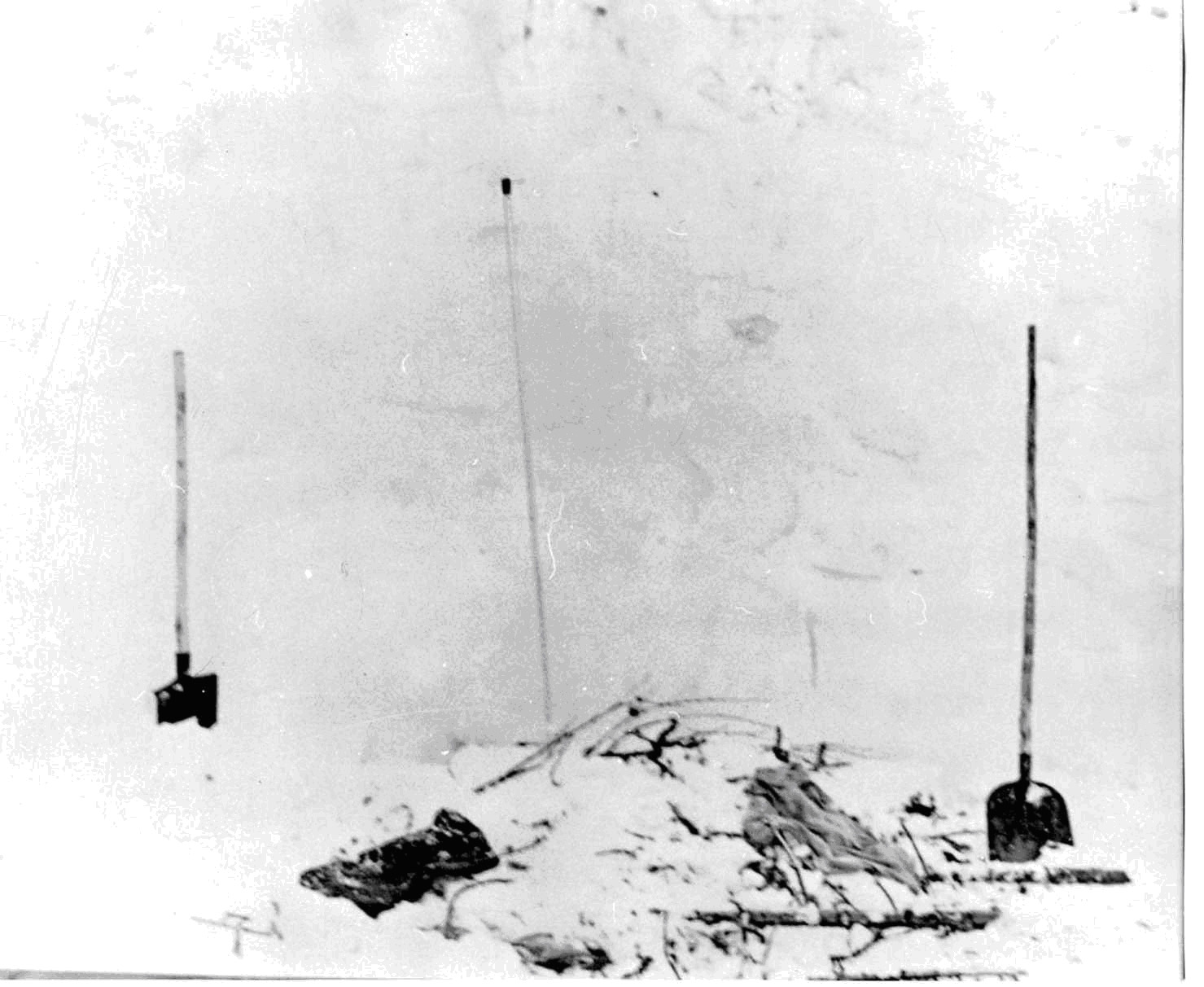
Excavation of the den. Photo from the case files
I happened to witness an avalanche of this type. During a winter ascent of the Tien Shan on a route of the highest (5th) difficulty category, our group had to traverse a slope on the approaches, about 300 meters long. It was January. When we stepped onto the slope, we realized that there was a ripe "snow slab" underneath us. All we needed was an impulse for the entire slope to start moving. Having climbed higher to the rocks, we moved in the right direction.
When we had gone about halfway, there was a dull click, and a crack ran along our tracks and further along the entire slope. The "snow slab" sank under the load (there were 5 of us with heavy backpacks). Before we could come to our senses, the entire slope below, hundreds of square meters in size, cracked into huge boulders and slid down. We remained on the loose deep hoarfrost, and in front of us there was a steep, 1-1.5 meter high wall of the avalanche breakaway line with an overlying slope, which no longer posed a danger to us, since the tension had been relieved (as has already been said, "snow slabs" do not slide down again!). We successfully completed the traverse on the loose snow.
Knowing all these processes that occur in the snow mass in winter, I also studied the condition of the snow in detail in the area of the "Dyatlovites" tent. No signs of the formation of deep hoarfrost were found. If it had formed (and these are ice crystals), it would not have disappeared anywhere before the spring warming.
- 5 -
The columns of compressed snow from the group's tracks, coming from the tent, could not have formed on either the "snow slab" (it is too dense) or on the deep frost (it is loose, like sugar).
Evgeniy Maslennikov was of the same opinion, who, according to Buyanov, "didn't understand it very deeply."
However, there were people who understood it before Buyanov. And his article is pure bragging, an assertion of imaginary superiority, which does not do him credit.
That's life. The new generation, based on the achievements of the previous one, achieves great results, but this circumstance does not give anyone the right to "smear on the wall" and defame their predecessors, especially if you do not know them.
How many decades the battle for Everest lasted! And now guides with a ticket will take you to its summit. But no one belittles the achievements of Sir Edmund Hillary and Tenzing Norgay in 1953 and the leader of the expedition John Hunt. They were the first, and it is always harder for the first. And they have remained heroes to this day.
But let's return to the events of 1959.
To be consistent, the entire slope from the tent to the Lozva valley, becoming steeper, should also have been avalanche-prone with the formation of deep hoarfrost and "snow slabs". However, from the end of February until May, the searchers not only did not provoke an avalanche anywhere, but did not even see the possibility of its formation. Believe me, we had to trample the entire valley from the tent to the cedar, and this is about 1.5 km. Our foot stepped on every inch of land. The snow was shallow, somewhere quite dense, somewhere we sank up to the knee, and closer to the cedar a little deeper. There was not even a small slide of snow from our impact.
Buyanov's opinion that "avalanche traces" in the form of stripped bark are visible on the trees does not stand up to criticism, since he did not notice (or did not want to notice) the same picture on flat areas of the terrain and even on counter-slopes. These are the strongest winds with a drift of prickly snow, like sandpaper, changing the appearance of plants. These "avalanche traces" are visible everywhere from the side of the prevailing western winds, regardless of the orientation of the terrain slopes. Even the trees orient all their branches to the wind to the east, like a flag, so avalanches have nothing to do with it.
The most diverse versions of what happened were born and discussed in our base camp of searchers. Then they "walked" around Sverdlovsk, acquiring incredible details and speculation. And the first versions were criminal. When they all turned out to be untenable, a natural, avalanche-related one arose. But based on all of the above and the indisputable evidence of all the search participants about the snow conditions and personal observations, it was not developed.
And only then was the man-made version born, as they say now, which was neither possible to prove nor to reject at that time due to the top secrecy in those years of everything that concerned this topic. And the entire course of the investigation, its secrecy gave rise to such guesses. What did it cost the investigation to accept the avalanche version, avoiding public resonance? The merit of investigator Lev Ivanov is that he did not make a deal with his conscience, despite the summons to Moscow and instructions on how to "correctly" conduct the case.
- 6 -

Lev Ivanov could have blamed everything on an avalanche, but he chose not to.
I can admit the idea that after the tent was set up, as a result of its deepening into the snow, the upper edge of the snow could for some reason collapse onto the slope of the tent or stick to it under the influence of the wind. In my practice, this has happened more than once both on hikes and during mountain climbs. This happened from the wind, and from snowfall, and from "streams" of snow rolling down the slope
In the Central Tien Shan, we got caught in an avalanche of freshly fallen wet snow. For us, the victims, a tent was set up on a ledge under a cliff. After some time, a small "avalanche" came down on us again, which began to fill the space between the cliff and the slope of the tent, pushing us further and further away from the cliff. Snow fell on our backs, on our shoulders, and we tried with all our might to resist this load. But even then, as in other cases, the thought of leaving the tent and fleeing did not arise.
Even more so, Igor Dyatlov would not have run in such a situation, because he knew that the tent was in an absolutely safe place, and the snow that fell on the tent flap (this had happened before), although it created a certain inconvenience, was not a disaster.
Perhaps someone decided to leave the tent with a flashlight to clear away the snow, which I also had to do in a similar situation. Most likely, it was Rustem Slobodin. He managed to put on one felt boot... But at that moment something happened that made everyone panic and leave the tent, cutting its flap for a quicker evacuation. This was the opinion that Evgeniy Polikarpovich Maslennikov initially held.
We had no doubt that the entire group left the tent in perfect health, as evidenced by the group's tracks.
P.S. Nevertheless, we must thank Evgeniy Vadimovich Buyanov for such a fundamental work and advise him to edit the text - to remake it into an excellent guide to winter hiking safety and not to connect it with the tragedy of Igor Dyatlov. This is a completely different case. Apparently, the time has not yet come to answer it
Scans from the original article

